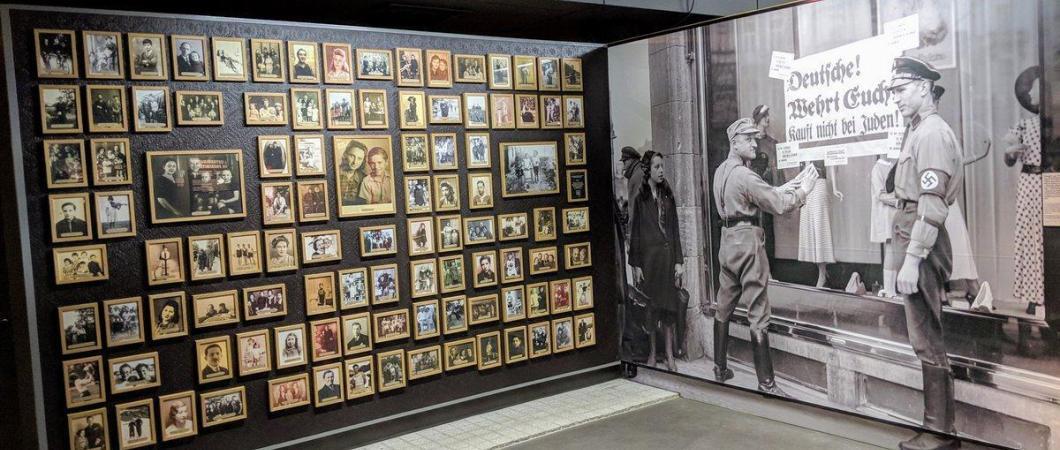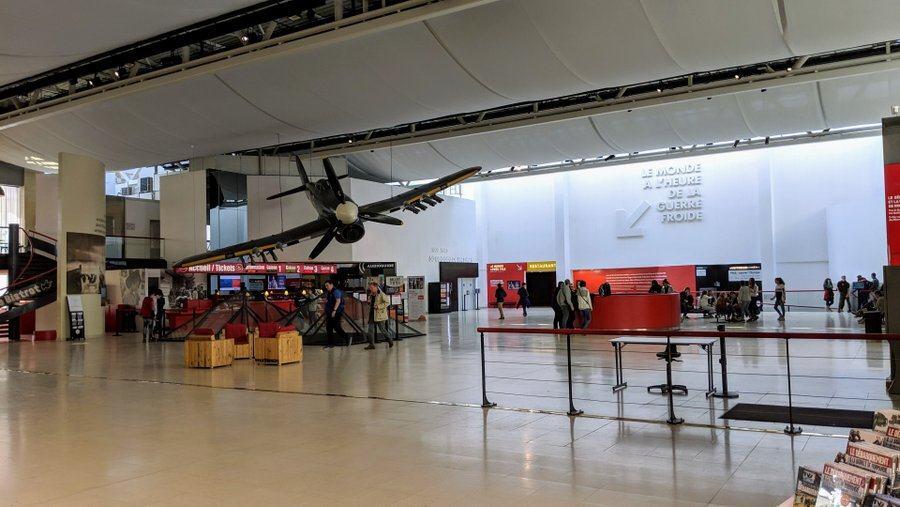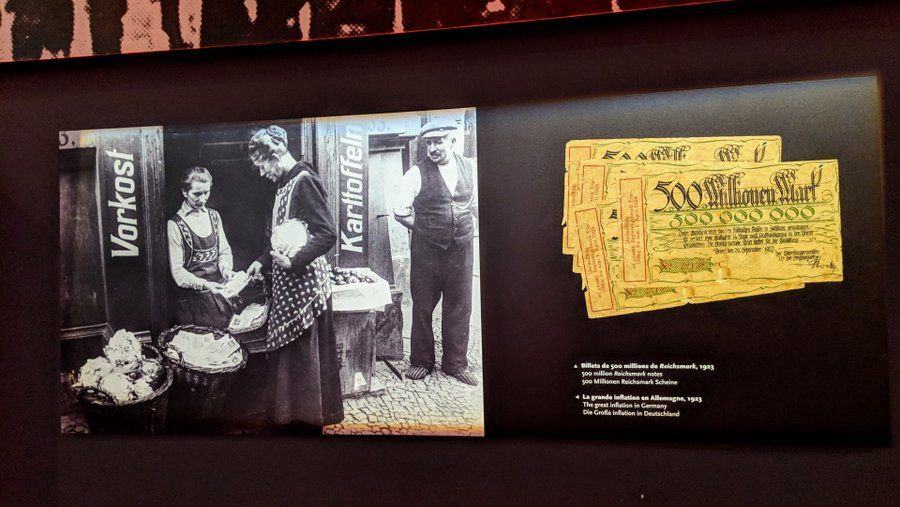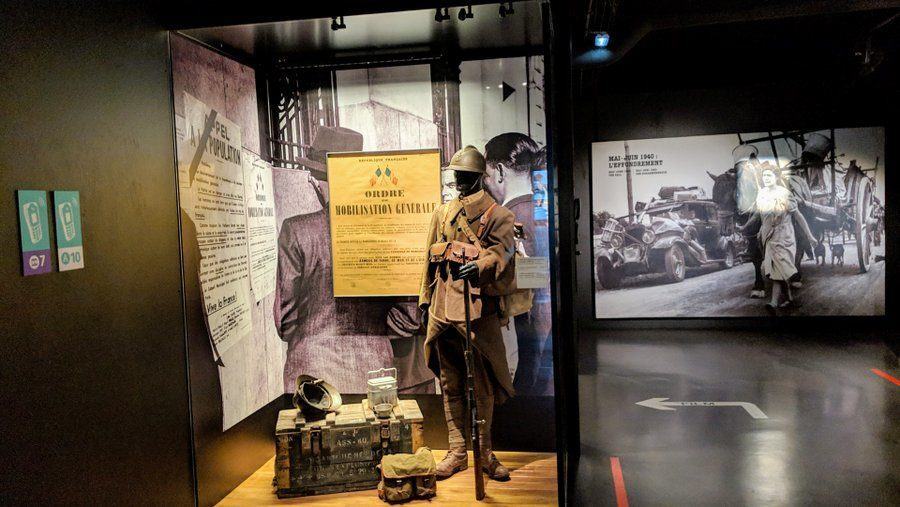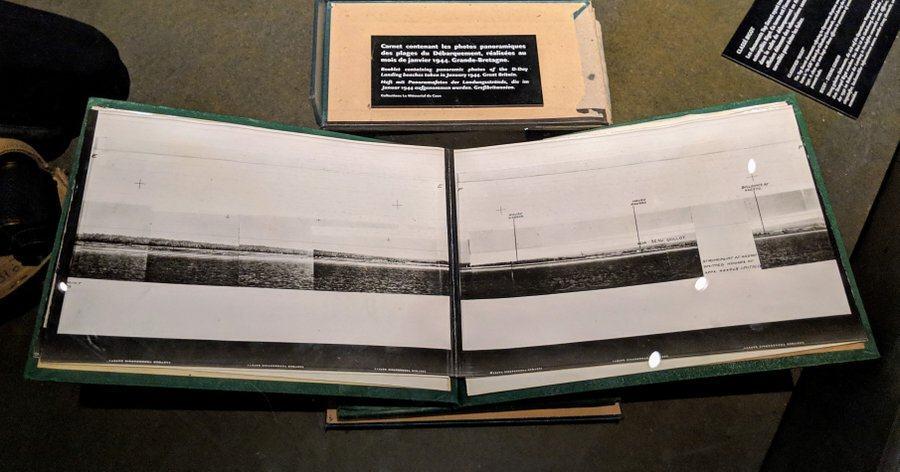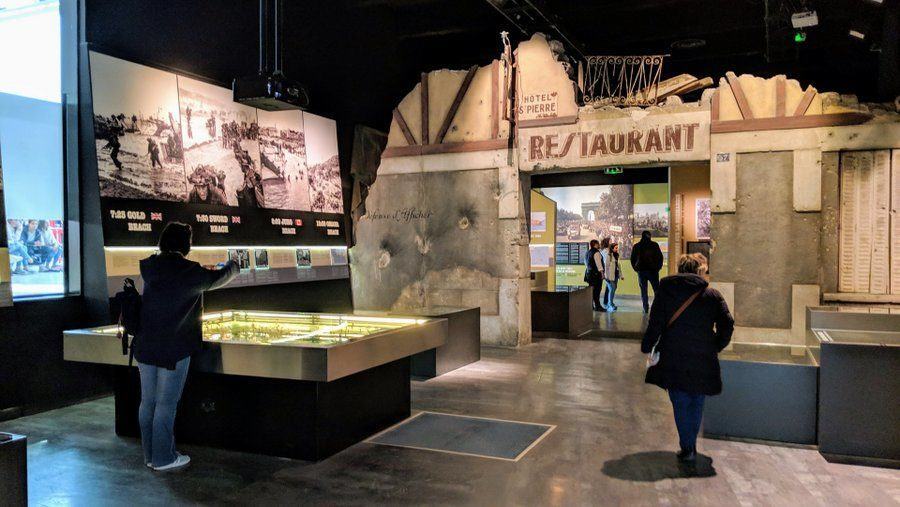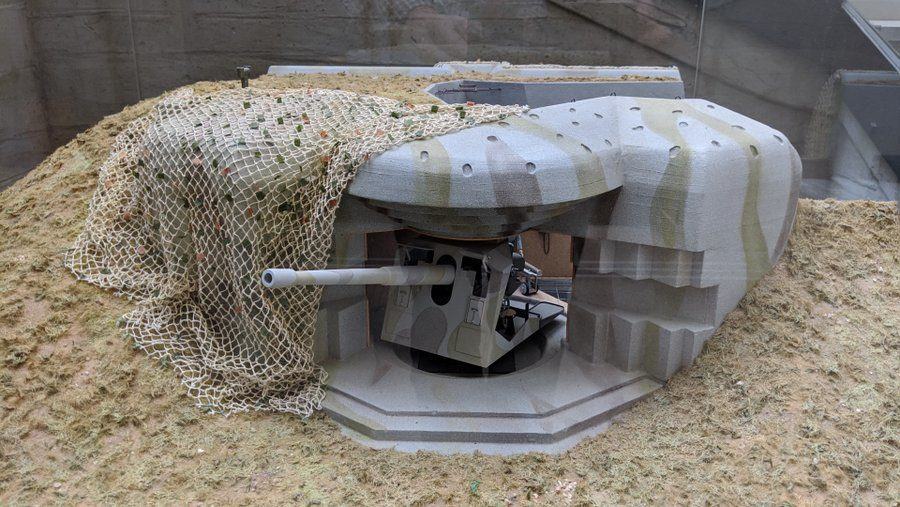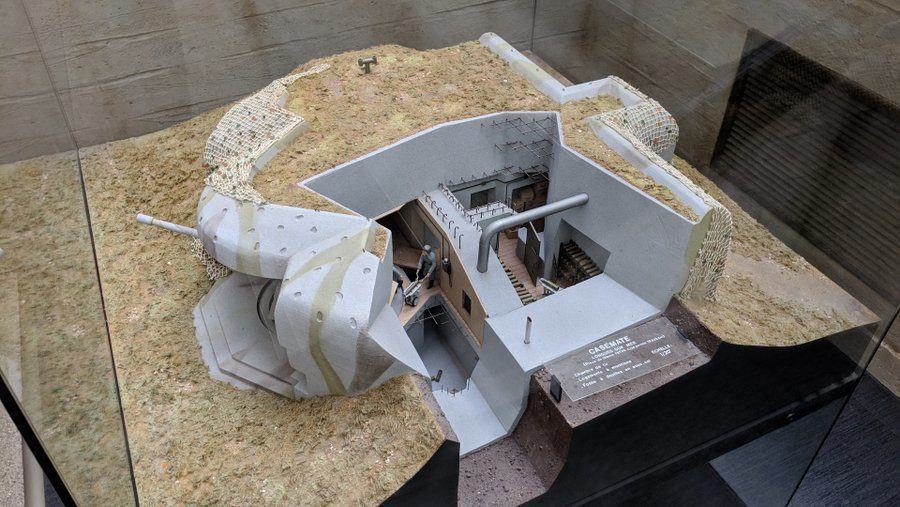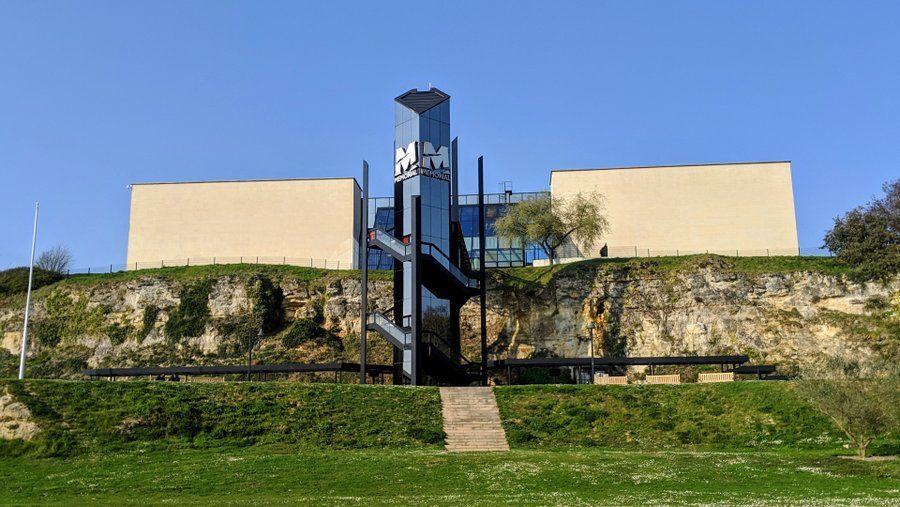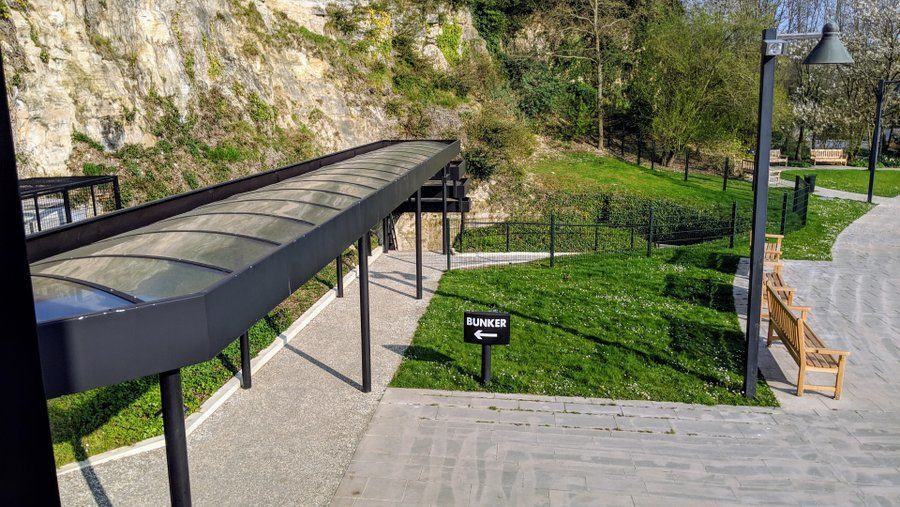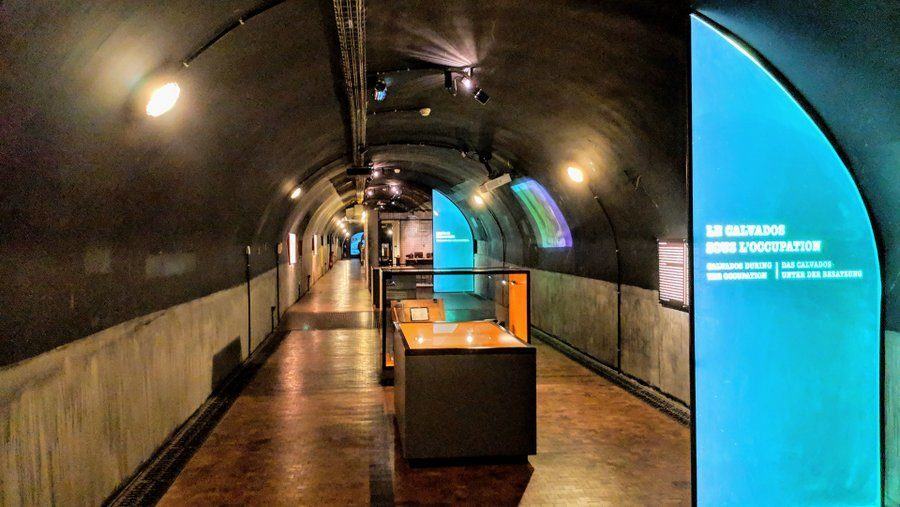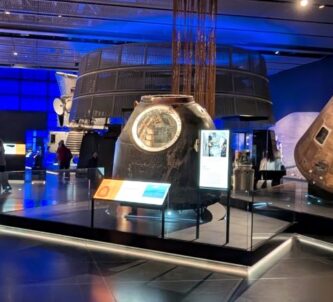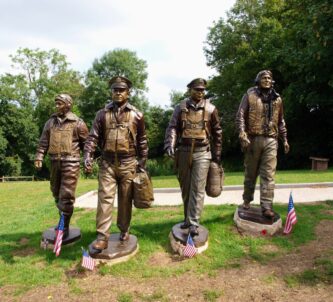The Caen Memorial is a memorial, a museum, and a World War II & D-Day educational resource. It was built in the northeast suburbs of the city of Caen on the ruined remains of the German bunker complex which served as the headquarters of the 716th German infantry division under Gen. Wilhelm Richter, and was opened in 1989.
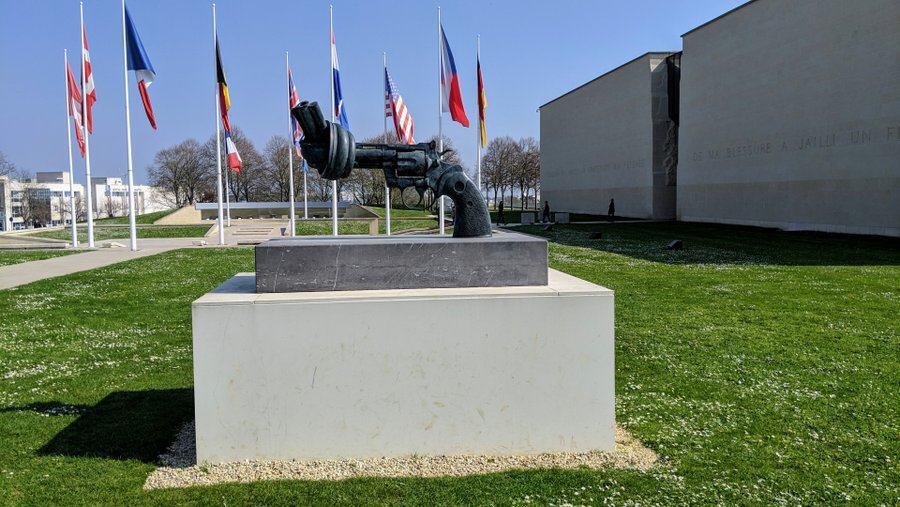
The battle to take Caen on the eastern edge of the D-Day landing beaches in Normandy, was a long drawn out affair – much longer than originally anticipated – and very destructive. Much of the city was devastated by Allied bombing and shelling, and was considered to have been sacrificed for the ‘Liberation’.
The Caen Memorial was designed to honour that sacrifice by explaining to future generations how it came about, by covering the events on the continent and worldwide from the start of the 20th century through to the Cold War era. The theme running through the memorial museum is ‘reconciliation’.
The Lobby
The huge open lobby area is really designed to cope with large numbers, because this an educational site, popular with school groups and tours, and it does get busy! If you are lucky enough to avoid the coach tours, you can take in the galleries at you own pace, but if you get mixed up with a tour group, you’ll find it hard to concentrate on the displays that attract your attention.
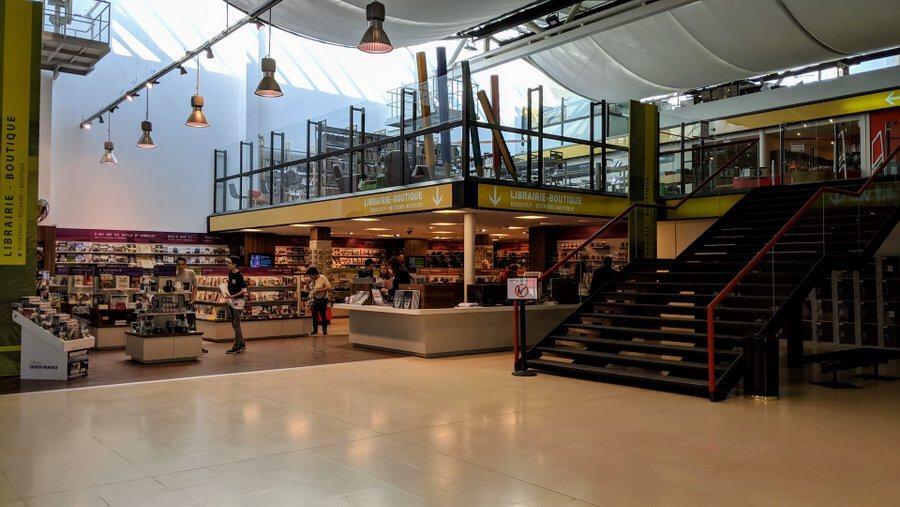
The lobby also houses the shop (there’s always a shop!) at one end, and above it the library and archive. At the other end of the lobby there’s a temporary exhibition space and their 360° cinema which is currently showing a 19-minute immersive film about Europe’s history from 1901 – 1991.

The highlight of the lobby is the near-lifesize replica of an RAF Tactical Air Force Typhoon suspended from the ceiling.
The Galleries
The museum has a trail through galleries of images & archive film, artifact displays and small dioramas. The trail starts with a spiral of images from the start of the century that takes visitors down to the main galleries, which run underneath the lobby.
The galleries are well laid out and cover the various stages and campaigns of WW2, and aspects of the war such as; life under occupation and the concentration camps. The trail ends in rooms focused on the Normandy landings.
For me, there’s interesting stuff in the galleries, but I can’t produce my normal list of highlights. The only thing I’d draw attention to (and you know how I like models!) is the excellent cutaway model of a gun encasement at Longues-sur-Mer.
Gen. Wilhelm Richter’s Command Bunker
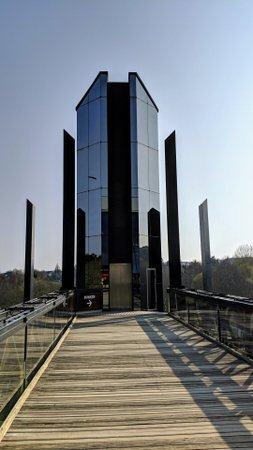
Bailey bridge to
the lift or stairs
The memorial museum is built on the edge of a former limestone quarry. In 1943, at the bottom of the quarry face, the Germans dug three dog legged (for defence) passages to a 70 metre long underground bunker, which was to be the command centre for the 716th Infantry Division. From here, Gen. Wilhelm Richter controlled the coastal defences between the River Orne and Bayeux – that’s Sword, Juno, Gold and Omaha.
In 1991 his bunker was opened to the public.
To get to it, you walk out of the back of the Memorial museum and across a section of Bailey bridge to take the lift or stairs down to the base of the cliff. From there you can access the entrance passage to the command bunker.
The bunker is quite spacious and it has been retrofitted out with some of the facilities and communications equipment that was used here in 1944. There’s a recreation of Richter’s office.
And here’s the thing….
It may feel a little clean & sterile now, but THIS is where the Third Reich first realised what was happening on 5/6th June 1944.
THIS is where the reports started coming in from isolated command and observation posts reporting unusual airborne activity & paratroopers landing.
This, at first light, is where the reports started coming in of massed shipping, shelling and beach landings.
This is where the minute by minute intel was analysed and passed up the chain to General Marcks, commander of the 84th army corps headquartered in Saint-Lô.
So, when you stand in this long tunnel, you have to remind yourself, THIS is where the German high command first thought: “oh, f**k!”
D-Day Normandy Posts
Declaration: I was on a self-driving press trip as a guest of the Normandie and Calvados tourist offices. Entry was free.
Feature Image: A gallery on pre-war Germany, featuring framed Jewish family portraits on one wall juxtaposed with a full size image of Nazi paramilitaries putting posters on the window of a Jewish shop.
Factbox
Website:
Mémorial de Caen
Getting there:
Mémorial de Caen
Esplanade Général Eisenhower
14050 Caen
Normandy
France
It is on the NW side of Caen.
By car: from Paris on the A13 or from Rennes on the A84, take Northbound ring road, exit 7. Onsite parking.
By bus: No. 7 from the city centre.
Entry Price:
| Adult | € 19.80 |
| Child (10 – 18), Student, Senior (60+) | € 17.50 |
| Family Pass (2 adults with children) | € 51.00 |
| Schools/Groups | See website |
They are keen to take bookings online.
2020 Opening Hours (Daily):
| 2 – 4 Jan | 0930-1800 |
| 5 – 27 Jan | Closed |
| 28 Jan – 31 Mar | 0900-1800 |
| 1 Apr – 30 Sep | 0900-1900 |
| 1 – 31 Oct | 0930-1800 |
| 1 Nov – 20 Dec * | 0930-1800 |
| 21 Dec – 31 Dec ** | 0930-1800 |
| * Except Mondays | |
| ** Closed 25th. 24th & 31st TBC | |

